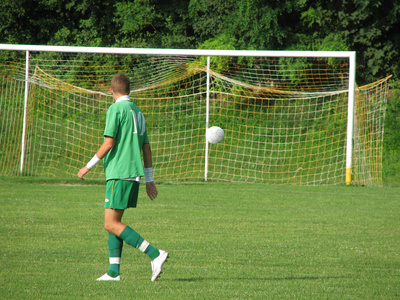
Seven-a-side soccer is popular throughout the world. It's often is used in recreational league play, tournament play and for younger children's soccer leagues. Some of the rules in seven-a-side soccer vary from those set by the Federation Internationale de Football Association, the worldwide governing body for soccer, or "football" as the sport is called in other countries. Rules also may vary slightly from league to league.
A team in seven-a-side soccer can have 13 uniformed players on it. Most leagues that play seven-a-side also have a minimum number of team members needed to start a game. For example, the leagues in the San Francisco Recreation Department of California require five players per side within 15 minutes of the game's start time. A team that does not reach this minimum defaults the game, and the score reflects as 3-0 in the other team's favor, under rules for the ARS Lac St-Loius league in Quebec, Canada. When a full team is present, substitutions are allowed at many points in the game. These include: when play stops due to an injury, during a throw-in, after a goal, before a goal kick and at halftime.
Free KicksIf a player commits an offense causing play to stop and be restarted with a direct free kick, the player from the other team who takes the kick can make the ball go in any direction. The kicker, however, cannot touch the ball a second time until another player has touched it. If a kick is taken in team's own penalty area it has to cross completely out of the penalty area when kicked. If this does not happen, the kick is done over again, according to Lake Shore Soccer of Quebec, Canada.
Offsides and Pass-Back RulesOffside rules do not apply in seven-a-side soccer games, according to Lake Shore Soccer. When offside rules are in place, players are not allowed to be closer to the goal on the opponent's side of the field than the defender who is farthest back or the ball when the ball is played by a teammate, according to soccerhelp.com. The "pass-back" rule is not applied in seven-a-side games either. This rule usually applies to balls deliberately passed to a team's goalkeeper by the goalkeeper's teammates.


